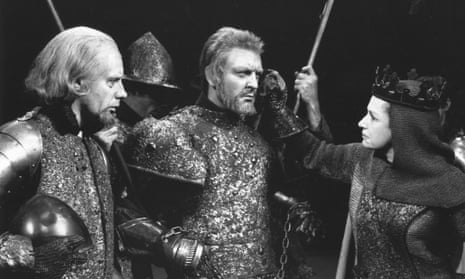What does the name Peggy Ashcroft mean to people today? Some will have seen her as Barbie Batchelor in the TV series The Jewel in the Crown or as Mrs Moore in the David Lean film of A Passage to India. But even these performances were 30 years ago.
What may have been forgotten is that Ashcroft was a great, pioneering stage actor who was just as much at home in the work of Beckett and Pinter as in Shakespeare, Ibsen and Chekhov. I was lucky to write a book about her some years back, and I pointed out that she had been in the forefront of every new movement in British theatre since the 1930s.
There is little doubt, however, that her finest hour came in 1963, when she played Queen Margaret in Peter Hall and John Barton’s Royal Shakespeare Company production of The Wars of the Roses. This was Barton’s conflation of Richard III and the three parts of Henry VI into a trilogy of mesmerising power. Ashcroft was, at the age of 56, a pivotal figure in all three plays.
First she was the skittish, sexy 25-year-old Margaret of Anjou arriving in a strange, foreign court. In the central play, she turned into a maddened she-wolf, displacing her saintly, ineffectual husband (a superb David Warner) at the head of the Lancastrian armies. Finally, in Richard III she become the old, rejected Margaret haunting the court she had entered as a young bride. It wasn’t just Ashcroft’s physical transformation that was breathtaking; it was also the revelation of a ferocity few had guessed she had.

Ashcroft had played emotionally demanding roles before, including Shakespeare’s Cleopatra, Ibsen’s Hedda Gabler and Terence Rattigan’s Hester Collyer in The Deep Blue Sea. But nothing had matched the challenge of The Wars of the Roses. In the trilogy’s most famous scene, Margaret daubs the face of the captive Duke of York with the blood of his slaughtered child.
Donald Sinden, who played the duke, once told me that even he was taken by the sudden look of hatred in Ashcroft’s eyes. Ellen Terry said that acting was based on the three I’s: imagination, industry and intelligence. Ashcroft possessed all three – although I suspect the most important of them was the imaginative capacity that allowed a woman who, in private, was graciously modest to enter into the soul and spirit of a foreign queen embroiled in internecine war. One of Ashcroft’s most basic decisions as Margaret was to adopt a French “R” sound to emphasise the character’s alien status. The externals were important, but what made Ashcroft’s Margaret so astounding was its realisation of the wild madness that overtakes people in extreme situations. In its revelatory audacity, it makes a fitting conclusion to my litany of great performances.
- Start at the beginning and read all of the Great performances series.

Comments (…)
Sign in or create your Guardian account to join the discussion